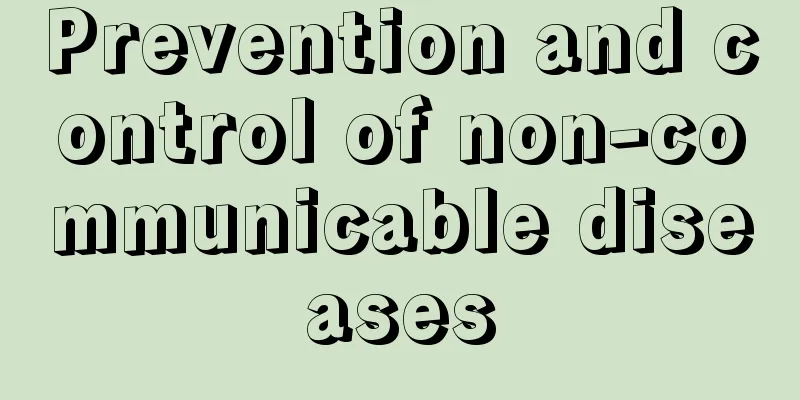Prevention and control of non-communicable diseases

|
Everyone must be curious about the prevention and control of non-communicable diseases. Every year, more than 30 million people die from non-communicable diseases worldwide. Although they are not contagious between people, many people still die because of their slow progression. Let’s take a look at the prevention and control of non-communicable diseases. Prevention and Control: 1 Reducing the impact of NCDs on individuals and societies requires an integrated approach that calls for all sectors, including health, finance, foreign affairs, education, agriculture, planning and others, to work together to reduce the risks associated with chronic NCDs and promote interventions to prevent and control them. 2 An important way to reduce noncommunicable diseases is to focus on reducing the risk factors associated with these diseases. Low-cost solutions exist to reduce common modifiable risk factors (primarily tobacco use, unhealthy diet and physical inactivity, and harmful use of alcohol) and to characterize the prevalence of noncommunicable diseases and their risk factors. 3 Other approaches to reducing NCDs are high-impact essential NCD interventions that can be delivered through a primary health care approach, strengthening early detection and timely treatment. Evidence suggests that such interventions are excellent economic investments because, if used early in patients, they reduce the need for more expensive treatments. These measures can be implemented in a variety of contexts with varying resource availability. The greatest impact can be achieved through the development of sound public policies that promote the prevention and control of noncommunicable diseases and by reorienting health systems to address the needs of people with these diseases. Generally speaking, low-income countries have lower capacity to prevent and control noncommunicable diseases. High-income countries are almost four times more likely than low-income countries to include NCD services in health insurance. Countries with inadequate health insurance coverage are less likely to have access to essential NCD interventions for all. From the above we know some precautions about the prevention and control of non-communicable diseases. As for non-communicable diseases, it does not mean that our chances of getting sick are smaller, or that we should not take it seriously. We should do timely and detailed physical examinations to nip the disease in the bud. At the same time, our country should also improve the medical insurance system to protect people's right to life and health. |
<<: Several ways to prevent coronary heart disease
>>: Comprehensive understanding of Alzheimer's disease
Recommend
What are the common dietary health care for lung cancer
There are many diseases in the lungs, and lung ca...
What are the early symptoms of lung cancer patients? These 4 symptoms are common in early lung cancer patients
Many people do not know the symptoms of lung canc...
What is the function of activated carbon mask
As the air quality deteriorates, many people are ...
Narcolepsy that harms oneself and others
Narcolepsy is a mental illness that is prone to o...
How can we strengthen the prevention of cervical cancer? Will cervical cancer become the first cancer to be eliminated?
"Cervical cancer remains one of the most com...
A small piece of tooth fell out?
It is a very common phenomenon for adults to sudd...
What is the best way to treat meniscus?
The meniscus is a relatively important part of th...
What dishes are good for stomach problems? These 5 foods are the best for stomach health
Gastric disease is a disease with a relatively hi...
What is the difference between heartbeat and heart rate
In daily life, people often mention the word hear...
Symptoms of prostate cancer can reflect the severity of the patient's condition
Prostate cancer is a common tumor disease that ca...
How much is the approximate cost of chemotherapy for advanced bile duct cancer
Cancer has taken away countless lives and broken ...
What can you eat to effectively prevent hair loss?
Everyone wants to have thick hair, but many peopl...
The top of my hair is very oily right after washing
Some people have always had excessive oil secreti...
How long can bacteria in feces survive in the air?
We usually need to clean up the feces in time aft...
How long can a person with liver cancer live? The life span of a liver cancer patient is determined by four factors
Liver cancer is already very familiar to everyone...









